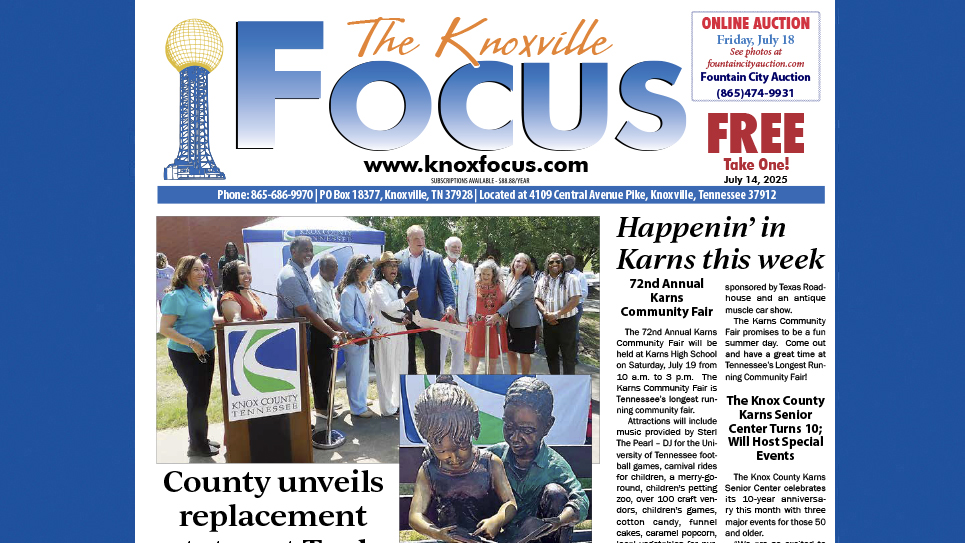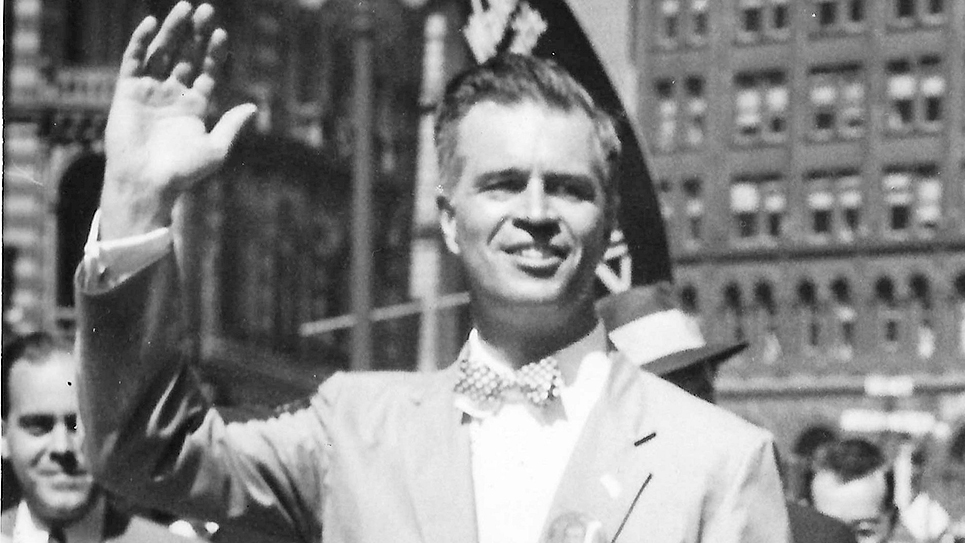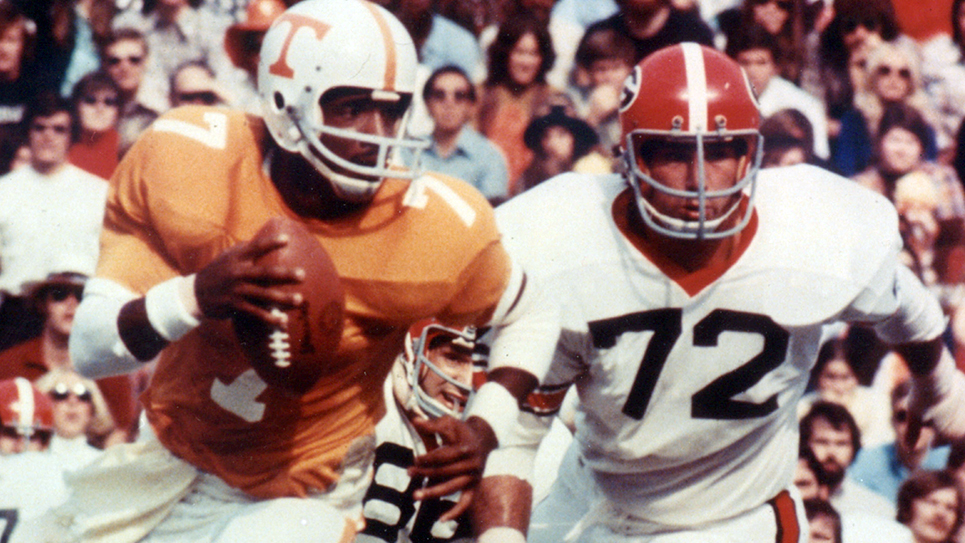Giving new meaning to the term ‘birds-eye view’
By Tom Mattingly
In December 1966, the Basketball Vols opened the William B. Stokely Athletics Center, an enlarged version of the Armory-Fieldhouse on campus. Seating capacity went from 7,500 in the Armory to 12,700 in Stokely.
There’s one area in Stokely Center I hadn’t visited, now that Stokely is consigned to history. That was despite going to as many games as I could over the years and working in the building from Jan. 5, 1987, through April 30, 2005.
What I missed seeing was the broadcast area over the arena’s east side from which John Ward and numerous other famous broadcasters called the games.
In Stokely’s debut season of 1966-67, the Vols surprised nearly everybody by winning the SEC title, led by multi-talented athlete Ron Widby. That came in Starkville, Miss., when Widby had 35 points, and Bill Justus canned two free throws in a third overtime to earn a 78-76 win.
That led to a spirited celebration where the Tennessee travel party ended up in the shower and had to wear Vol warmups on the plane ride home.
The Vols won the inaugural and final contests in the arena over the years, thus giving a touch of symmetry to the history of “Good Old Stoke.”
The Stokely radio broadcast perch was unique, suspended high over the arena floor, giving new meaning to the term “birds-eye view.”
(The “birds-eye view” appellation is also not to be confused with “Byrd’s-Eye View,” Knoxville Journal sportswriter Ben Byrd’s daily column. Byrd covered the Vols in venues from Alumni Gym on, as well as being a regular on press row after retiring.)
The route to the broadcast area was up the steps through the east stands, row-by-row, to the top, probably row 60 or higher. There was a metal walkway leading to the broadcast area, where the greats of collegiate radio called the games.
Making the trip to the broadcast area was almost like traversing one of those rickety bridges spanning the looming chasm in “Indiana Jones” and other movies of that ilk. You looked down at your own peril, someone said, as you carefully inched along the catwalk.
The television commentators had it better, broadcasting from floor level, also on the east side. But the real broadcast magic took place on the radio.
It was a “great location,” said Ward of the view from high above, adding it “offered a better vantage point.”
In Ward’s view, the concept was a no-brainer. “When I do broadcasts, I prefer to be working upstairs because I can see the game unfold better,” he said.
While walking through the halls of Stokely in its final days, with or without making the trek onward and upward, it was easy to close your eyes and hear Ward’s calls of the memorable moments of Tennessee hoops echoing through the miracle known as the “mind’s eye.”
“You walked, sir!”
“Did he make it? He MAAADE it!”
“Ernie G from Tennessee”
“KINGGGG of the Volunteers!”
“Willie B of Millen G!”
“Bottom!”
“Give it to him!”
Many of these exciting moments began in the days before the barrage of televised games, when Ward created excitement at home and away, on winter nights when the hopes and dreams of uncounted Vol fans were seen through his eyes and manifested in his voice. His was a staccato baritone many broadcasters tried to copy, but no one ever duplicated. He defined the moment for Vol fans.
“Prior to around 1980, there were no TV games,” said Ward. “So, obviously, radio broadcasts became the dominant medium to follow those games.”
You could feel the tempo of the game in his commentary. That’s why, even when the games were on television, Vol fans often turned down the sound preferring to hear Ward’s smooth-as-silk play-by-play.
After seeing the game, fans rushed home to see the game again, the contests they had just paid to see. Ward’s play-by-play was dubbed over the game tape. Some Vol fans went so far as to not listen to the game but chose to tough it out until the replay came on at 11:30 p.m. Ray Mears once said he learned a great deal from listening to Ward’s play-by-play and incisive analysis of games played several hours earlier.
There were limits to his oratory, however.
“I would never say ‘bottom’ in public,” said Ward. “I’ve never used it in a speech because I’m embarrassed to. It’s spontaneous, and that’s the beauty of it.”
Speaking of “spontaneous,” there was a time Ward and wife, Barbara, were on the Orient Express. How far away could you get from the wilds of Big Orange Country? Apparently, not that far.
As John and Barbara found their seats, a man looked in Ward’s general direction, and, without hesitation, said, “Bottom!”
That broadcast area and the entirety of Stokely is consigned to history, but the memories linger, to be savored, even with the passage of time. That speaks to the influence of John Ward, a man who captivatingly told the story of Tennessee hoops from a perch high above the Tartan, later hardwood, floor of Stokely Center.






